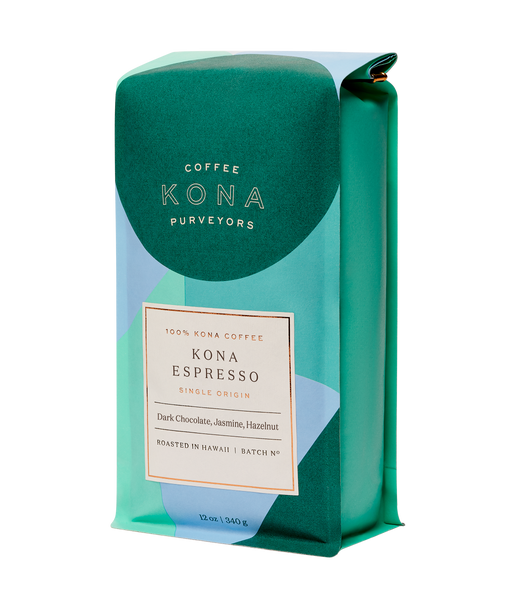Coffee Beans 101: Every Little Thing You Required to Understand About Espresso and Blended Coffee Beans
When it comes to coffee, comprehending the nuances of coffee and blended beans can transform your daily mug. From the expanding process to roasting strategies, every step plays a function in your coffee experience.
Comprehending Coffee Beans: Types and Ranges
When diving into the world of coffee, comprehending the types and ranges of coffee beans is important for every lover. Arabica beans are known for their smooth, complex flavors and lower caffeine content, making them a favorite among coffee connoisseurs.
Ethiopian Yirgacheffe offers intense floral notes, while Colombian beans offer a healthy taste profile. By acquainting yourself with these beans and their flavors, you'll elevate your coffee experience and make even more educated options in your brewing trip.
The Growing Refine: From Seed to Bean
When you explore the trip of coffee, everything starts with seed selection strategies that set the foundation for quality. From there, growing and harvesting play vital functions in guaranteeing the beans thrive. Processing methods change those harvested cherries right into the coffee beans you enjoy.
Seed Option Methods
Picking the appropriate seeds is important for creating high-grade coffee beans, as it lays the structure for the entire growing process. Pay attention to the seed's age and storage problems, as fresh seeds often tend to sprout better. Consider the disease resistance of different varieties, as this can considerably affect your yield.
Growing and Harvesting
As you nurture your coffee seeds into thriving plants, understanding the cultivation and harvesting process is vital for attaining the most effective flavor and quality. Beginning by planting your seeds in well-draining dirt, ideally in a shaded location to shield them from straight sunlight. As your plants grow, preserve consistent moisture, and be conscious of their requirement for nutrients. Prune routinely to advertise air movement and healthy and balanced development.
When it comes time to harvest, try to find ripe cherries, which commonly turn a vivid red. Hand-picking is usually the finest method to assure only the ripest cherries are selected. Timing is necessary; harvesting also early or far too late can influence the flavor account of your beans. Embrace perseverance and treatment, as this is where quality begins.

Processing Methods Clarified
Once you have actually collected your coffee cherries, the next important action is processing them to transform those lively fruits into the beans you'll make. There are 2 main methods: the completely dry procedure and the damp procedure. In the dry procedure, you spread out the cherries out in the sun to dry, enabling the fruit to ferment and impart one-of-a-kind tastes to the beans. On the other hand, the wet procedure involves eliminating the fruit promptly and fermenting the beans in water, leading to a cleaner preference. After handling, the beans are hulled, arranged, and typically dried out once more. Each approach impacts the taste account, so try out both can aid you find your preferred mixture. Recognizing these methods is essential to enjoying your coffee experience.
Toasting Techniques: How Taste Is Established
When it pertains to roasting coffee beans, recognizing roast degrees is essential to exposing their special flavors. Each toasting strategy effects the aroma and boosts the flavor development procedure, offering you a richer coffee experience. Let's check out exactly how these aspects collaborated to elevate your day-to-day mixture.
Roast Levels Discussed
Roast levels play an essential duty fit the taste profile of your coffee. You'll delight in bright level of acidity and fruity notes when you select a light roast. As you relocate to a medium roast, you'll see an equilibrium of sweetness and intricacy, usually highlighting chocolate or caramel flavors. Dark roasts, on the various other hand, provide bold, great smoky characteristics with less acidity, making them robust and abundant. Each level results from various roasting times and temperature levels, impacting the beans' chemical make-up. By comprehending these levels, you can much better choose a coffee that matches your preference preferences. Experiment with various roasts to discover which one resonates with you, boosting your general coffee experience and enjoyment.
Influence On Aroma
The roast degree not just influences the preference of your coffee but likewise significantly influences its fragrance. Each roasting technique releases various unstable compounds, shaping just how your coffee smells. Furthermore, the quality of the beans plays an essential function; newly baked coffee launches extra aromatic oils, enhancing that tempting fragrance.
Taste Growth Refine
As you discover the flavor development process, you'll discover that toasting methods play a vital useful link function in forming the taste account of your coffee. The roasting temperature and time directly affect the level of acidity, sweet taste, and anger of the beans. Light roasts retain more of the bean's original tastes, highlighting floral check out here and fruity notes. Tool roasts balance level of acidity and body, using a well-shaped taste. Dark roasts, on the other hand, draw out bold, great smoky attributes while decreasing the bean's inherent top qualities. During toasting, chain reactions, like the Maillard response and caramelization, transform the beans and improve their complexity. Trying out with various roasting degrees can help you find your excellent brew, so do not be reluctant to taste and uncover the rich range of flavors!
Coffee vs. Blended Coffee: Trick Differences
Coffee and mixed coffee each offer one-of-a-kind experiences that cater to various preferences and choices. Coffee is a concentrated coffee brewed forcibly warm water with finely-ground coffee beans, leading to an abundant, strong taste and a velvety layer of crema on the top. It's frequently appreciated as a shot or used as a base for beverages like lattes and cappuccinos.
On the other hand, combined coffee incorporates numerous beans from various regions, creating a more balanced flavor account. You'll usually find blends that highlight body, sweetness, or level of acidity, making them versatile for various developing techniques. While espresso concentrates on strength, combined coffee might use a wider series of flavors that can transform with each sip.
Inevitably, your choice between espresso and combined coffee come down to your personal preference. Whether you hunger for a leisurely cup or a quick shock, both options have something delicious to offer.

Developing Techniques: Opening the Perfect Cup
When it pertains to brewing coffee, finding the right technique can transform your experience and elevate your cup. Each brewing technique has its one-of-a-kind charm and can significantly affect your coffee's taste and fragrance. As an example, using a French press permits you to delight in a robust and abundant brew, while a pour-over technique gives a clean, intense cup with distinctive flavors.
If you choose coffee, spending in a quality device can assist you master the art of pulling shots. For ease, a single-serve capsule system provides speed without compromising preference.
Don't forget concerning cool mixture, which delivers a smooth, less acidic coffee suitable for hot days. Experiment with different approaches to find what reverberates with your taste buds.
Sampling Notes: Identifying Taste Profiles
Just how can you really appreciate your coffee if you do not know what tastes to look for? Sampling notes are your guide to comprehending the complex world of coffee. Some coffees could leave a chocolatey or sugar aftertaste, while others may have a bright, tidy coating.
Consider the body of the coffee, also; is it light and airy or thick and syrupy? Don't fail to remember level of acidity; a brilliant acidity Discover More Here can add vigor, while a reduced level of acidity could give a smoother experience. By recognizing these flavor profiles, you'll grow your connection with each mug, making coffee tasting a fascinating trip of exploration.

Tips for Selecting and Storage Coffee Beans
Keeping and selecting coffee beans effectively can significantly boost your developing experience. Beginning by selecting premium beans that suit your taste. Seek freshness; beans roasted within the last 2 weeks are suitable. Check the roast day on the packaging, and purchase from local stores or credible roasters.
When you have your beans, store them in an airtight container to stop direct exposure to air, wetness, and light. A dark, great place functions best, so prevent keeping them in the fridge or freezer, as this can introduce dampness. Only grind the quantity you need to keep quality; whole beans maintain flavor longer than pre-ground coffee.
Finally, attempt to utilize your beans within 2 to four weeks after opening for peak taste. Complying with these tips will assure your coffee remains delightful and flavorful, elevating your day-to-day mixture to new heights.
Frequently Asked Inquiries
Exactly How Long Do Coffee Beans Remain Fresh After Toasting?
Coffee beans stay fresh for concerning 2 weeks after toasting - SOE. You must save them in an impermeable container, away from light and wetness. After that, their taste and scent begin to diminish significantly

Can I Mix Different Coffee Bean Varieties?
Definitely, you can mix various coffee bean varieties! Trying out blends can improve tastes and create an unique preference profile. Just ensure to balance the toughness and attributes of each variety for the very best results.
What Is the Perfect Work Size for Coffee?
For espresso, you'll want a great work size, about the appearance of salt. This enables suitable extraction, resulting in a rich, savory shot. Experiment a little bit to find what matches your taste best!
How Does Elevation Affect Coffee Bean Taste?
Elevation influences coffee bean taste by influencing the growth rate and chemical make-up. Higher elevations result in slower maturation, which boosts level of acidity and intricacy, offering your coffee a dynamic and special preference you won't fail to remember.
Exist Decaffeinated Variations of Espresso Beans?
Yes, there are decaffeinated variations of coffee beans. You can appreciate an abundant coffee taste without the caffeine kick. Just try to find "decaf" blends at your regional coffee store or specialty store.
Coffee Beans 101: Whatever You Need to Know Regarding Espresso and Blended Coffee Beans.
When diving right into the world of coffee, recognizing the types and ranges of coffee beans is essential for every enthusiast.When it comes to roasting coffee beans, recognizing roast degrees is vital to disclosing their special flavors. Espresso is a concentrated coffee made by requiring warm water through finely-ground coffee beans, resulting in a rich, strong taste and a creamy layer of crema on top.On the other hand, mixed coffee integrates numerous beans from different regions, developing a much more well balanced taste account.